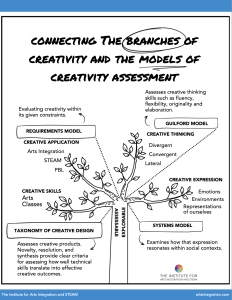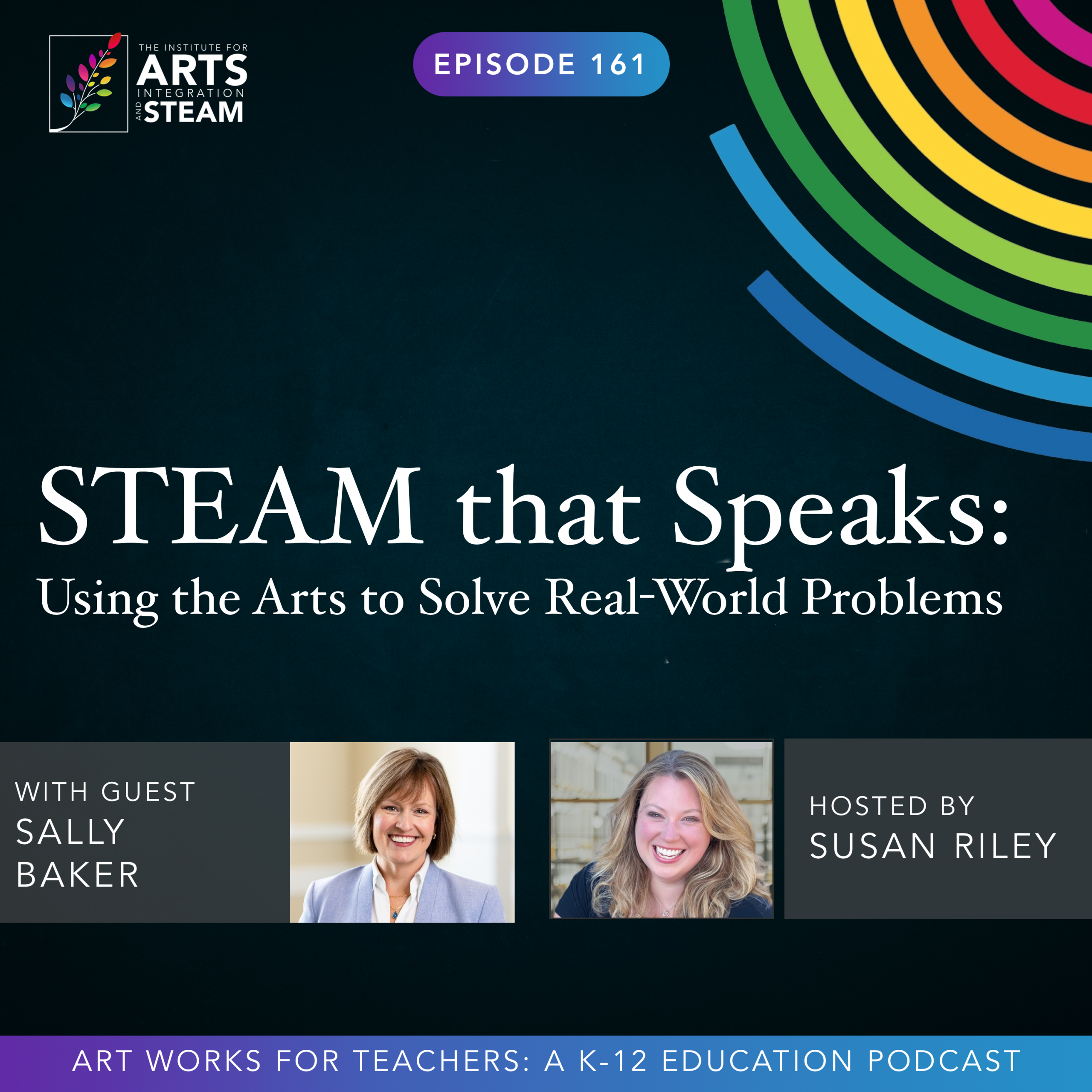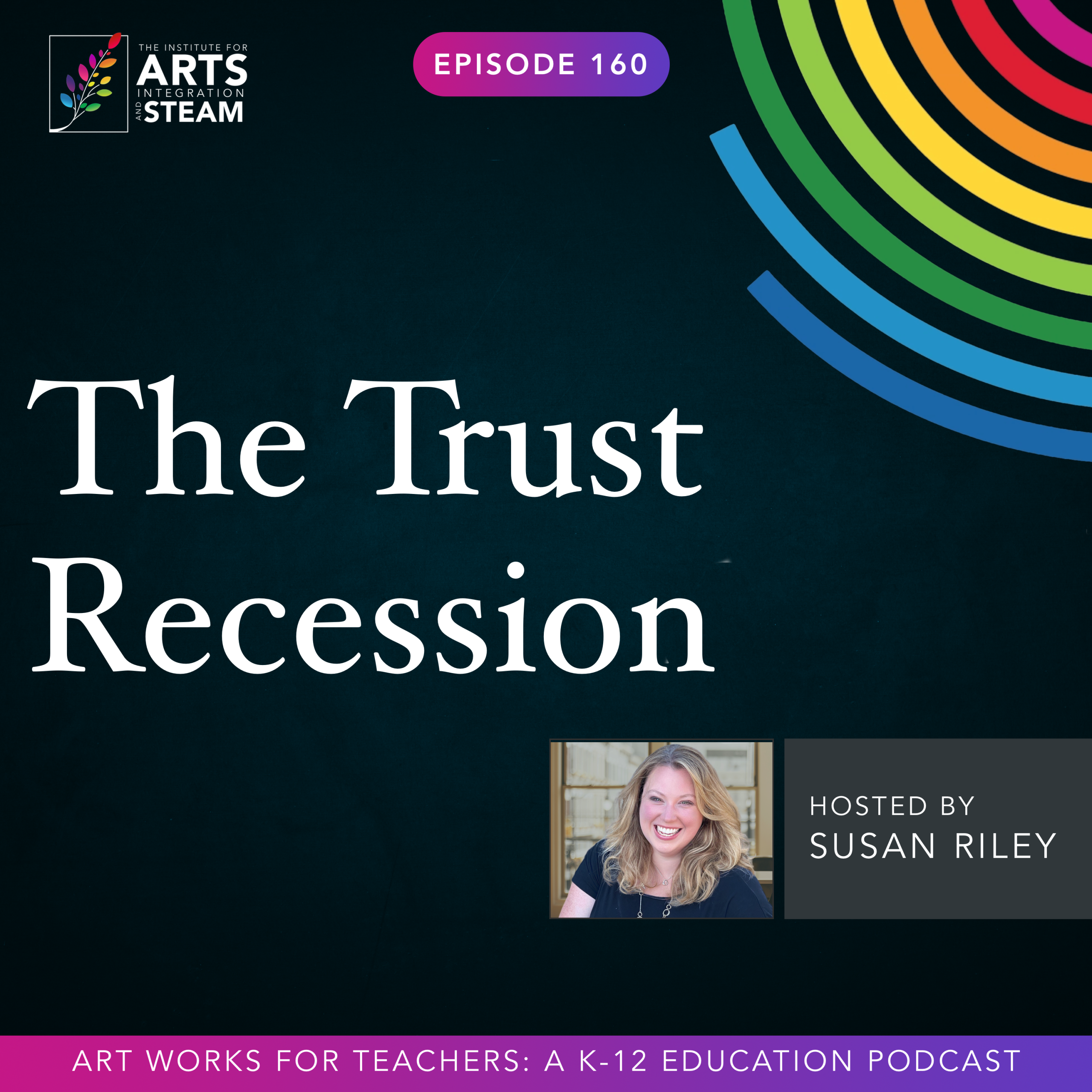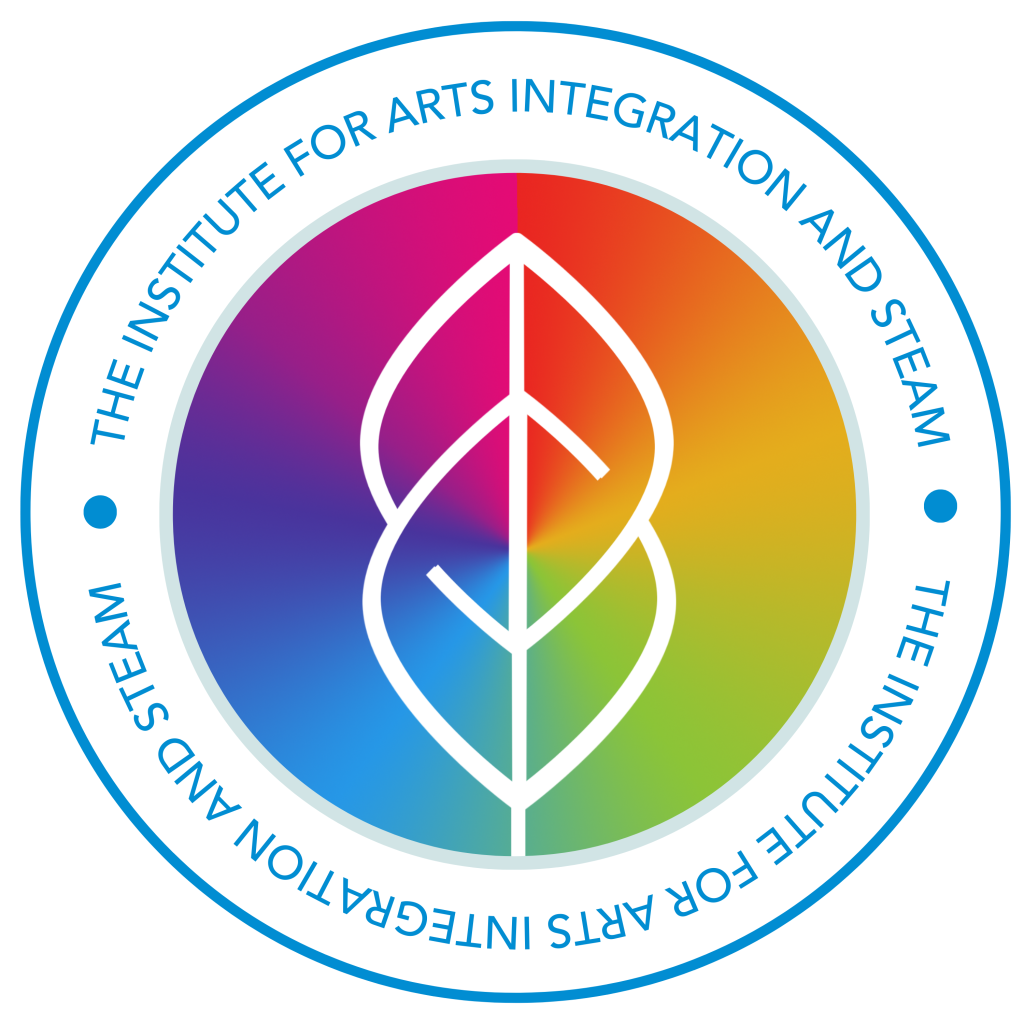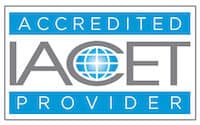ART WORKS FOR TEACHERS PODCAST | EPISODE 130 | 31:20 MIN
Testing Creativity: 4 Models to Explore
Enjoy this free download of the Connecting the Branches of Creativity resource.
Susan
Hello, friend, and welcome back to another episode of Artworks for Teachers. I'm your host, Susan Riley. And today we're going to jump into a topic that many of us try to avoid, assessment. And especially when we're talking about assessing creativity. This gets a lot of our pins and needles up, maybe, or hawks up. That's what my mom used to call it, right? It makes us a little nervous talking about assessing creativity because creativity feels like this very aloof, kind of mysterious thing that we are given as a gift almost. And so how do we assess something like that? How can you be right and wrong when it comes to creativity? so we're gonna dive into some of these questions today. I think one of the first things that we have to dispel is this idea of right and wrong, that assessment somehow means a measurement of or a judgment of mastery in some level. And of course, we've talked about this on the podcast before there is a difference between assessment and evaluation. Evaluation is that judgment of whether something is right or wrong. And that is usually reserved for things that have a right and a wrong answer. Whereas assessment is really just taking a look at growth, a measurement of growth, and taking a look at
How does something evolve over time? And that can certainly be applied to creativity. But before we get into that, I want to back us up a little bit. Now, a lot of what I'm going to share today came from the research for my upcoming book all about creativity in the age of AI and why creativity is our greatest human advantage since the dawn of time, Especially right now in the way that the world is shaping in terms of technology and artificial intelligence, why creativity is the thing that is going to give humans an advantage in the future to come. That's my thesis and that is the book is going to be coming out within the next year. I'm so excited. My final draft is almost ready to go out to the publisher and then things really get on a roll. So I'm excited to get this book out into the world.
I wanted to share some of the lessons that I've learned while researching this book so that you can start to practically get this reminder out and get your hands around using these ideas. I'm not going to share with you everything that's in the book, but I do want to take some time to unpack some of the, you know, realizations that I've come to as I've researched for this particular book that's coming out.
And there's an entire chapter in here dedicated to assessment. I think it's that important. I also think that assessment is not something that's sexy, that anybody wants to talk about because it's been made into this villain. And in the chapter, I kind of take a different spin on assessment and creativity. But as I begin each chapter, I also start with a vignette of sorts. I love stories.
I love learning about how other people have navigated the world within a context, right? And so the story that I share from this chapter is something that I will share with you today because I think it's really cool. You gotta understand, I come from a family where my dad and my brother have always been obsessed with flight, anything flight related. There were times that my dad would take me along on a long drive, he was delivering something out to, you know, halfway across the country, and we'd have to stop at the Wright-Patterson Flight Museum out in Ohio because he just had to show me all of the planes that were there, whether or not I really wanted to, right? I've certainly come to appreciate flight because of both my father and my brother and their passions for it. And so when I came across this story about fighter pilots in the 1950s,
I was hooked right away because I was like, yes, my family would certainly appreciate this. But I think everybody's going to appreciate this story about fighter pilots because this story was originally discovered or shared in the 1950s in Time magazine. See, at that era, in that point of time, we were in midst of the Korean War and the Air Force knew that they had a problem.
And the most difficult problem they had to solve was how to create more ace fighter pilots. Because when they looked at their data, they realized that 5 % of pilots were making 30 % of the kills that were needed in the war. And we can do a side note on whether kills are needed or not, but that's the data, right? And so 5 % of these people were committing to 30 % of the achievement goal that they were looking for, right? And so the US Air Force was like, well, how do we replicate those 5 %? How do we make more of those guys, right? What's the secret sauce that those guys know that none of the rest of our fighter pilots know? And so they brought in their team psychologist, who happened to be E. Paul Torrance.
Now those of you who have been in the creativity realm for a really long time, Torrance is going to start to ring a bell. And here's why. Because E. Paul Torrance created the tests that are most commonly used or known about testing creativity. We're called the Torrance tests. Okay. But back in the 1950s, he had not yet created these tests that were going to be then used by so many people around the world. At that time,
He was a psychiatrist for the US Air Force. And prior to that, he had been a high school English teacher. And what he had noticed in teaching high school boys back in the 1940s was that the students that were the most disruptive and that caused the most discipline issues or the most classroom management problems were often the ones who went on to become the most successful in the workplace after they left school. They were going on to become entrepreneurs and successful other business owners and engineers and people who were seeing great success in the world, but that did not demonstrate that in the classroom. So in the 1940s when he was working with these boys, he created this beta test, if you will, trying to figure out what are the things that I could measure of these boys that kind of identify their secret sauce. And they weren't things that were on regular assessment tests to identify IQ or genius level. These were other things that were things like flexibility or being able to pivot a thought in real time. Okay. So he had had this basis, this beta, but he hadn't really used it before. So when he was commissioned by the US Air Force to find out what is the secret sauce behind these fighter pilots, he pulled that old beta test out and he was like, I wonder if this might give me a clue. Well, sure enough, using that old test that he had, it did. It unlocked three reasons that these fighter pilots, these ace pilots were the best of the best. And it turns out it was because there were three qualities that all of them have. Aggressiveness, self-confidence, and a devotion to flying. Now, if you're thinking about an ace pilot, if you're thinking about Maverick, and you're thinking about Tom Cruise as Maverick, does he have those three qualities? Sure. Aggressiveness, self-confidence, and devotion to flying.
Now, I want you to think about those three qualities though outside of being a fighter pilot. These are not necessarily things that we teach. These are qualities that people seem to have within them, right? That they take what they want, they are aggressive, they go after the thing that they want to go after. There is a self-confidence about them. While they may question some things themselves, they are fully confident in. They know what they're doing and they don't really deviate from that. And they have a devotion or a passion for whatever it is that is their thing, almost to a point of obsessiveness. Okay? And this could apply to any field. As a musician myself and knowing many musicians, I can tell you that these three qualities follow that.
Right? I know that when I was in the midst of performing and that that was part of my world, then I was aggressive. I went after the things, the roles that I wanted or the songs that I wanted to pursue. And I still have a self-confidence that I can't explain, right? That it's just a part of who I am. And when, whenever I'm focused on a project, I am fully devoted to that project. You can ask my team members at any given time. For another real world example,
Take a look at the, if you've listened or watched to the new series on Netflix, The Residence, the bird watcher detective, she is aggressive. She knows what she wants, she goes after it. She has a lot of self-confidence and she is fully devoted to both her job and to birding. So think about it in that respect and you'll start to see a pattern emerge that people who are highly creative, who embrace both the messiness of the process and the exactness of a product, oftentimes share these three characteristics. And so these became the basis for the current torrents tests that we've used since the late 60s to identify and measure the creative capacity and ability various people. Now does that mean that when we use those tests that determines are you creative or not? No. Some folks will say yes to that question. I, after doing all of this research, have really determined that the Torrance test guide us to the underlying possibilities that exist within people and how we cultivate them and how we choose to allow those things to emerge and embrace that process. That is the key to the Torrance test and any other kind of creative tests that are out there, which we're gonna get to a couple of other models in a minute. And so the important thing here, as we're starting to dive down this pathway of assessing creativity, is to understand that creativity comes with some characteristics, some identifiable patterns that everyone has the ability to cultivate.
While some people have those kind of wired in to their DNA, it is not an all or nothing. We can develop some of these skills and processes and characteristics if we choose to. And so as we're moving in education and as we're starting to see AI come into its own and we're seeing it evolve rapidly right before our eyes and people are starting to wonder if
AI can produce music and artwork and poetry. What is the point of having humans? What is humanity's point? And I believe at the core of everything, it is that we are creative individuals and we all have the elements of creativity available to us. It's a matter of finding those elements, engaging them and intentionally cultivating them so that we can thrive in the world to come. So again, as I was looking at this and I was doing some research, I came across some really interesting information. So not only stories like the Torrance test and how that came about with the fighter pilots in the 50s, but also that, you know, this idea about creativity and where it comes from is not new, right? The Greeks, you actually thought that it was a gift bestowed upon people from the Muses, right? That's where our thinking that you either have it or you don't, that's where this comes from, is all the way back in Grecian times when they thought that the Muses had a gift that they would give only the special few, and only they could tap into that creativity. And then after we got through that period of time into the Renaissance, this still kind of persisted even into the Renaissance with Da Vinci and Michelangelo where this gift that you had could be cultivated and you could get better at it. So advancement there, right? It wasn't an all or nothing. You could engage this gift you had, but that the gift was still belonging to a selective few. It wasn't really until we got into the enlightenment era that we started to look at, creativity be measured?
And can creativity be something, a practice that we all can work towards? And so in the Enlightenment period, people started to take a look at what are some elements of creativity that might be fostered in people? How can we identify creativity as something, not just this ethereal thing that's out in the universe, but something that we can grab a hold of and really start to take a look at and understand how we both measure and assess it in a variety of different ways. This is where the alchemy of both process and product really started to link it. And this is an important piece of the puzzle, my friend. When it comes to creativity, there are two distinct areas that we're actually talking about. We can talk about the creative product that is produced at the end of a creative journey, right? The iPhone that sits in your hand is a creative product. That is, at the end of the day, it used to be in somebody's mind and now it's in your hand. That's the creative product. Then there's the creative process, the way by which you got to the product. And that's the messy middle. That's the stuff that doesn't necessarily feel good when you're in it. I can tell you for sure when you're in the process stages of creativity,
It's just unsettling because it's a mess. You're all over the place. Your ideas are all over the place. Things that you thought were going to work don't work anymore. This process piece is messy, whereas the product is much more refined. So when we're going back and looking at how creativity has been measured, both in terms of creative people and creative products, right? We're looking at the product side. But it hasn't been until recently that we really acknowledged there is a process to this that is also embracing creativity. And there are patterns within that process that allow us to get to the product that we're looking for. And so embracing both sides of this model and the magic that happens when you combine looking at the process and the product simultaneously.
And in schools, we know that the focus has always been on the end product, right? And that makes sense, right? Considering where education has evolved from, which is really from that industrial era, trying to get a factory workers that would make the same widget over and over. It wasn't really about creative thought, right? It was about, you do the work? And what is the final product? And can the final product that you produce be exact?
Right? And so think about how we teach. We and how we expect students to learn. We want them to be exacting. We want them to be dedicated to the details. We want those final products to be as perfect as possible. And we teach to that outcome. But think about all the things that are necessary to get to that product. That is the creative genius.
And up until now, we just kind of expected that that process would just kind of handle itself. And once you got through the process, you'd get to the final product, and that's where we were focused. But what if the product could not only be influenced by the process, but be completely transformed by it? And that's a key question to start to ask. And if that's true, then we really need to start to shift our focus in education to looking at the process by way we get to an answer, by way that we get to a product, right? And up until now, that has been very difficult to get at, even in things like project-based learning. When schools are embracing project-based learning, are they really embracing the mess of working on the project, or are they just excited to get to the end product of that project?
Most likely it is to get to that end product, right? And again, that has been our driver until now. But when we live in the era of AI, which can produce a product in almost immediately, what's our purpose now? This is where we come back to that process-based learning and focusing on looking for the patterns of creativity in the process so we know what to cultivate. And this is where I wanna share four different models that have have emerged on assessing creativity because I think this is going to help us better understand how we can focus on these things so that we can embrace them and bring them into our classrooms and really start to teach our students in a way that focuses on the reality that they're going to face. So I think that's going to be helpful for us today. So I'm going to share my screen. If you are watching online on YouTube, you're going to see this. If you're listening on a podcast, then I invite you to come on over to artsintegration.com/artworks where you can download a copy of this sheet that I'm going to share. So several episodes ago, way, I'm going to say several months ago, I shared an episode on the artworks for teachers podcast about the four creative branches that I really feel encapsulate creativity in general.
The first one is creative skills. The second is creative application. And these are both accessible areas of creativity, right? And then there are two explorable areas of creativity, creative thinking and creative expression, where we're not as concerned with assessing these areas as we are with exploring them and deepening them so that they can support the other two areas, kind of merging the four together.
What's interesting is that as I have been researching what I have found is that the four general assessment models for creativity actually fit very well within these four branches of creativity. So I want to go over these a little bit and I thought showing you how they connected and kind of emerged together would be helpful. So when we're talking about creative skills. This is where our arts classes come in. This is where we're creativity for creativity's sake, right? We're studying art for art's sake. We're looking at music for music's sake, just for the art itself. And we're building our skills in those areas. That's where we have those dedicated arts classes. And those are extremely important. But when we're looking at assessing those arts skills, we want something that's not going to be looking at necessarily the process but specifically at those skills, because our intention there is the product, right? So what we're gonna look at is something called the taxonomy of creative design. Now this is a way of assessing creativity that looks specifically at creative products. So you're looking for novelty, you're looking for resolution. So does it resolve something? Does it fix a problem? Does it get to a natural resolution? And synthesis to provide clear criteria for assessing how well those technical skills can translate into effective creative outcomes. So this gives us the ability, this taxonomy of creative design, looking at novelty, resolution, and synthesis. Looking at these three areas helps us to understand the skills that we've developed in context. So when we're looking at the product, we can see the skills and how they got there.
That's a great way to assess this. Now, if we move over to the creative application branch, these are where we're looking at areas like arts integration, STEAM, and project-based learning. When we're applying not only the art skills, but also the content skills that we have and synthesizing those things together, we're really looking at evaluating the creativity within given constraints and kind of looking at the overall process of how we got there. We're evaluating how creativity emerged given the constraints that you've provided. So if I'm working within a STEAM lesson, the constraints that I'm in are the STEM area that I'm focused on and the arts content that I'm focused on. And within those constraints and within that lesson, what did my students produce based upon those constraints and how did they get there? That is the requirements model that can be applied to a lot of different ways of looking at creative application and using creativity, right? Having that process occur. If we shift over into our explorable branches into creative thinking, now remember, this is things like divergent thinking, convergent thinking, lateral thinking, anytime we're engaging those creative thinking skills, how do you assess those, right?
Well, thankfully we have something called the Guilford model. This is where we're specifically assessing creative thinking skills such as fluency, flexibility, originality, and elaboration. This overlays almost directly with the creative thinking branch. It's a wonderful, easy way to start to look at how is creative thinking, how does that evolve, and how do we assess that kind of thinking? Probably if I were to say, the easiest way to look at creative assessment is gotta be the Guilford model. Followed finally by the systems model. Now this is gonna align with our creative expression branch. This is when we're looking at emotions and environments and representations of ourselves and how that emerges through the arts. The systems model examines how that expression resonates within social contexts. again, we're not presenting our creative ideas in a bubble, our process, our creative process, even if you shut yourself up in a whole like a hermit to create your creative whatever it is, it still has to be listened to or looked at or experienced by someone else. It has to have a social context to it. And so when we're looking at creative expression, how is our creativity, how does it manifest not only for ourselves, but within the context of others experiencing that creativity. Okay, now what's incredibly exciting about all of these different models of assessment is that while I can overlay them on these creative branches with fair amount of ease, they don't stay there. They can overlap. So for example, in creative skills, could I use the requirements model or the systems model when looking at creative skills? Sure, I want to know how the skills that I used to produce a piece of art impacted the viewer's experience of that, right? So how did my precision, how does that impact your perception of my work of art? That's using a systems model with creative skills. That's why when you look at these models, even though I've overlaid them, with the branches that make the most sense, they still all come back to the trunk. They all feed off of one another. And you can mix and match and layer these kinds of assessment models together, which is kind of my point. So when we come back and look at assessing creativity in general, and we're thinking about this topic, it's important to understand that one assessment does not fit all.
Right? It's not the Moo Moo that we all wear and somehow fits everyone. That's not assessment. Right? There are different models for different purposes and you can layer models together. So you can get creative within the assessments that you use and how you're using them. The importance here is looking at the intention, looking for patterns in both the process and the product and selecting the assessment tools that you most want to use that look at the things you most want to look at. Assessing creativity is not about black and white, yes or no, is this creative, is it not? It's so much more complex than that and nuanced than that. And understanding the four creative branches and how these four different assessment models can be used within them is a great first step at embracing this idea of measuring creativity and assessing creativity and looking at how we can replicate and explore this creativity, tap into that in our students because I'm telling you in the world that we are watching evolve in front of our faces, this creativity in both its process and product form is the thing that gives us our greatest advantage in the future ahead.
So I hope that this was helpful for you today. I cannot wait to be back with you again next week for another episode of Artworks for Teachers. Bye for now.

